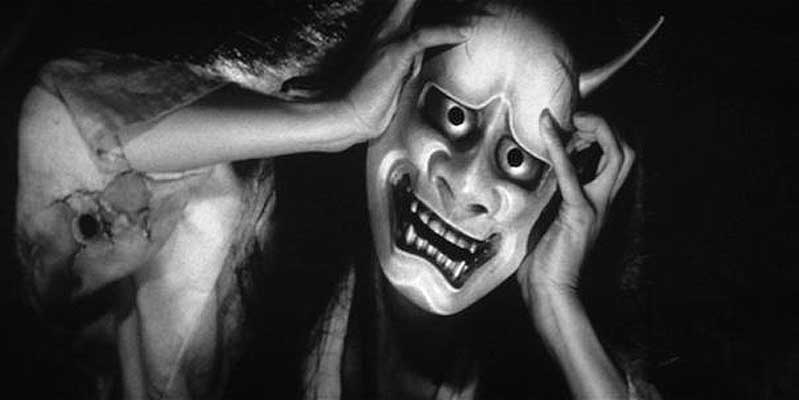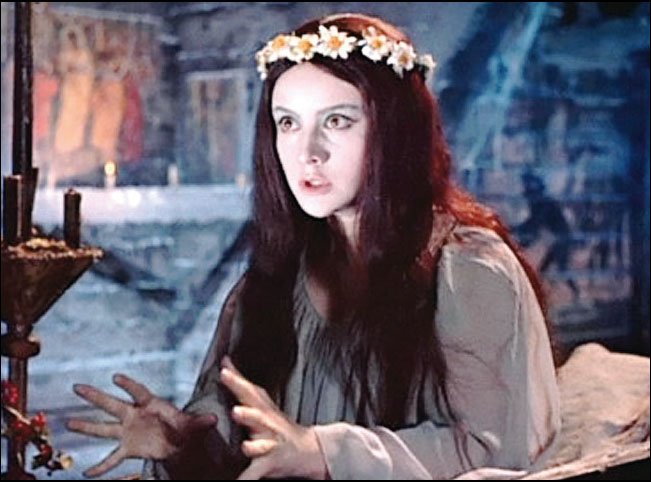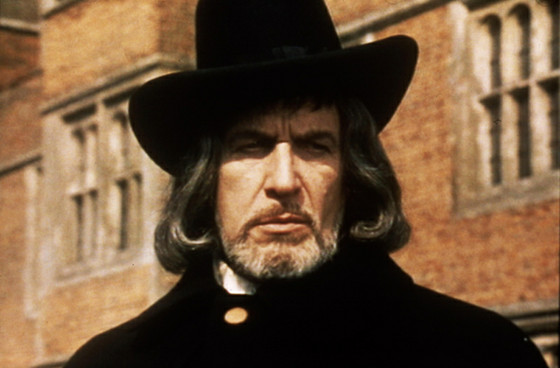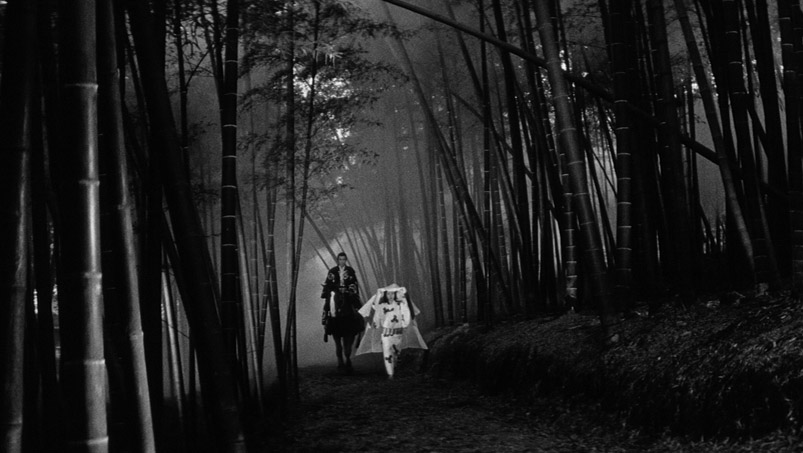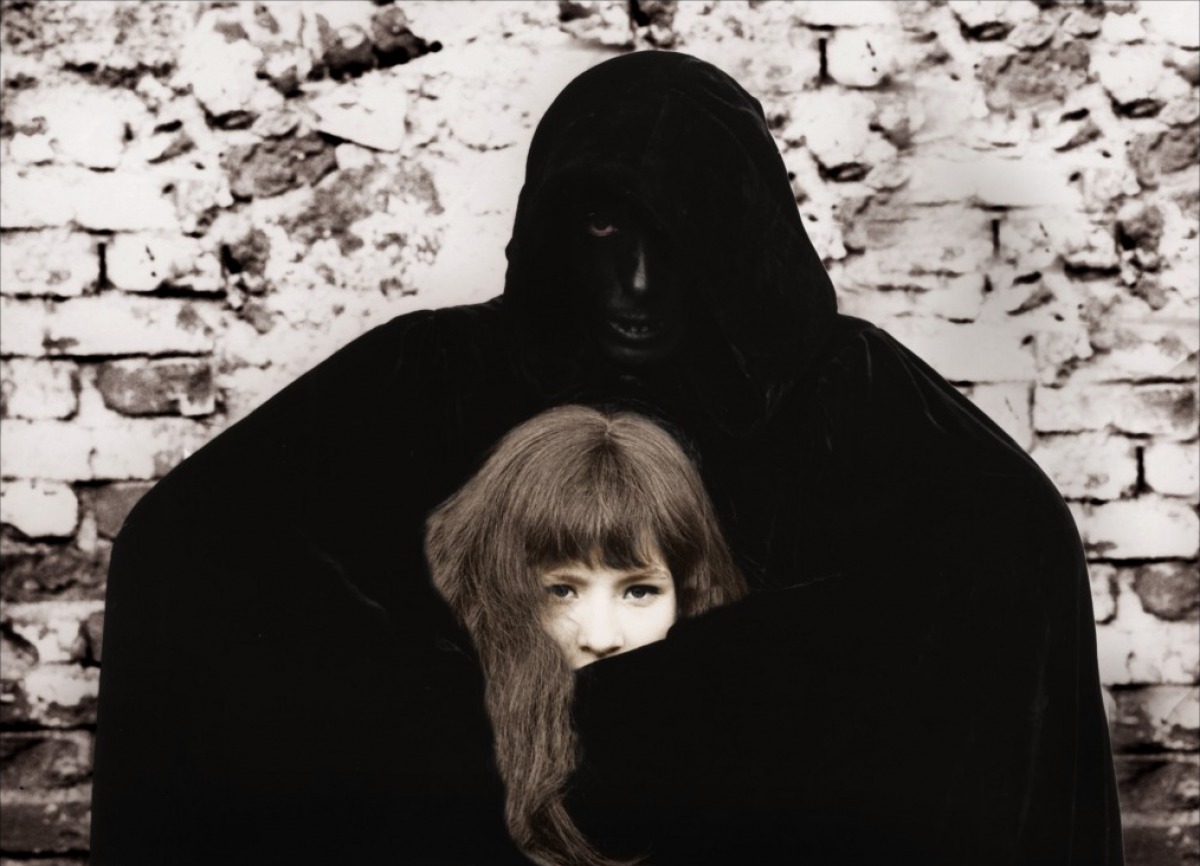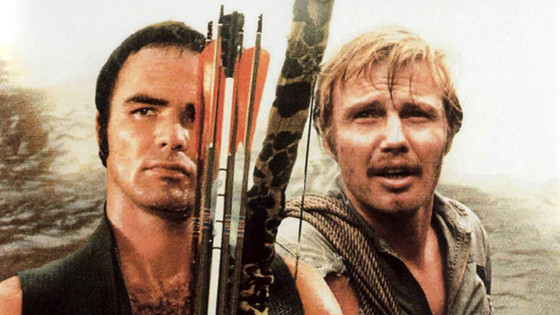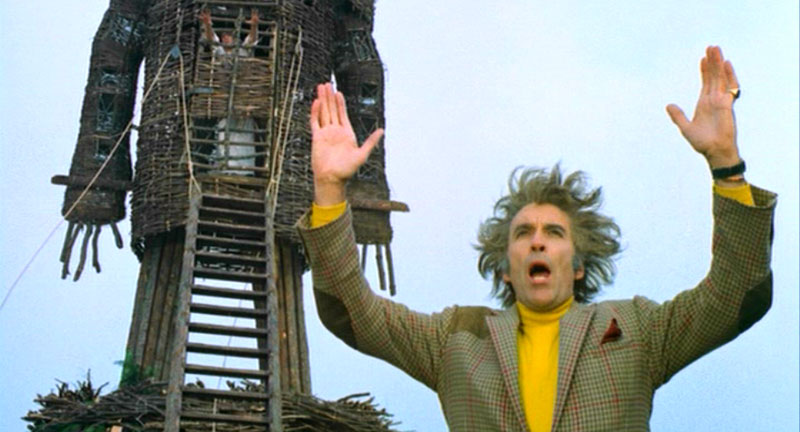7. Onibaba (1964 – Japan)
Onibaba (meaning Demon Hag) is a Japanese folk horror directed by Kaneto Shindo concerning an old woman and her daughter-in-law living in rural Japan at the time of a civil war in the 14th Century. The two women trick any passing soldier into following them through a certain path for food and provisions, wherein the soldier falls down a secret hole and once he has died they steal his armour and anything else on his body to sell for food and provisions of their own. The horror element comes into the film later on and has to do with a curse and a terrifying mask which destroys its wearer.
Onibaba is beautifully shot in black and white, but with a sense of claustrophobia that permeates within the high-grassed area the action takes place in. It’s a tense and often brutal story of survival and the destructive power of jealousy with a surprising ending that won’t be easily forgotten.
8. Viy (1966 – Russia)
We travel to Russia during the middle ages for a creepy, but not without some degree of ghoulish humour, take on Russian traditional folktales. Viy, meaning ‘evil spirit, is based on a short story by 19th century Russian writer Nikolai Gogol and concerns a seminary student who, getting lost in the bleak countryside, is attacked by a witch and kills her just as she turns back into a beautiful young girl. Our hero is then unknowingly employed by the girl’s father to hold vigil over her corpse for three nights in the local church. However, every night the witch wakes up and torments the student in a variety of ways until the first light of day sends her back into her coffin.
One of Viy’s strongest points is its special effects which are strikingly innovative for the time and have not aged badly: A flying coffin, a piggy-back ride through the sky and a host of demons and monsters make up certain sequences which stand out. The film mixes horror elements with more humorous ones to create a film somewhere between one of the better Hammer films and an episode of Scooby-doo while remaining its own entity entirely. Certainly it is one of the most unique films on this list; both in visual style and content, giving viewers cause to wonder if the Russian countryside is truly littered with witches and devils or whether it’s all that Vodka that’s drunk in the film.
9. Witchfinder General (UK – 1968)
Director Michael Reeves was only 25 when he died of a drug overdose but left behind a small handful of films, this being the most infamous. Set during the English civil War, Matthew Hopkins (Vincent Price) is a Witchfinder – a man who seeks out ‘witches’ from small towns along the otherwise bucolic English countryside, and tortures and executes them for an agreed fee.
One of the most notorious British horror films of the 1960s for, what some critics call, its nihilistic world outlook and shocking torture and execution scenes, it remains a classic of the genre. Vincent Price is suitably and subtly sinister as Hopkins even though he and Reeves where purported not to get along during the filming due to the Director believing Price would not be able to play Hopkins as a serious villain but instead ham the character up. He was proven wrong however and the result is a very chilling film based on historical fact.
10. Kuroneko (Japan – 1968)
Often considered a companion piece to Onibaba as it is set in the same period, Kuroneko is also directed by Kaneto Shindo and, similarly concerns a mother and daughter-in-law waiting for the son of the house, a samurai, to return from war. Unlike Onibaba, Kuroneko is more of a straight forward revenge-horror and quite a bit grislier than its predecessor too. A band of Samurai happen upon the two women in their remote home on the edge of a vast bamboo grove. The men rape and murder them but the women’s spirits are invoked by ancient cat gods and they appear as ghosts seeking vengeance on all samurai that cross their path.
Again, quite a brutal film but one in which the revenge seems completely just and the villains are not really villains but poignant figures avenging themselves of the wrongs done to them. The film is full of moody lighting and gory deaths. The mist rolling in through the desolate bamboo grove is a striking image and the revenge concept itself is one that has inspired many films since.
11. The Blood On Satan’s Claw (UK – 1970)
The Blood on Satan’s Claw is another perfect example of the Folk Horror genre as it deals with a rural community during the 17th Century who are prone to all manner of superstitious beliefs, and with good reason. The Devil’s skull is unearthed by a farmer ploughing his field in a small village in England and pretty soon the young people of the village begin behaving erratically before turning murderous. It is revealed that Satan is planning to rebuild himself limb by limb with the help of the children who have begun to grow his black fur on parts of their bodies to eventually offer up to him in a deranged ritual.
The plot may sound outlandish but it is dealt with so subtly that you only realise fully what’s going on during the film’s climax, since the film can be seen as more of a comment on youth culture during the late 60s and early 70s than anything else. Once possessed, the young people of this devoutly religious community go against all notions of what their elders and society of the time deem acceptable, just as the youth of the counterculture era were doing at the time the film was made. The beauty of the leafy green countryside, all of which was filmed on location, is made eerily unnerving by the acts of pagan brutality that occur within it, one scene in particular still leaves a pretty nasty after-taste.
12. Valerie And Her Week Of Wonders (Czech – 1970)
The Czech new wave of the 1960s and 1970s has left us with many striking films, few more so that Valerie and her week of Wonders. The story is sort of an Alice in Wonderland Tale, if that story had been a sexual nightmare filled with vampires and metaphors. The film is more like watching a dream than watching a film so the plot isn’t really important to the progression of the narrative but concerns a young girl called Valerie who lives with her aunt, who is probably not all she seems, and is being stalked by a Nosferatu-like monster through the streets of her small town.
The whole film is a metaphor for puberty and leaving childhood behind, but being too unsure of the adult world to fully commit to growing up. Indeed all of the adults in the film are shown to be evil or monstrous in some form (a scene with a predatorial priest is unsettling) and the only person Valerie can trust is her friend Eagle, but she can’t be sure whether he really cares for her or if he just wants to steal her magic earrings (so many metaphors). The film is darkly beautiful and has a fantastical folk-tale quality that sweeps the viewer along from one strange encounter to the next.
13. Deliverance (US- 1972)
Modern man versus the American wilderness and some of its most unsavoury inhabitants in John Boorman’s Classic Deliverance. Four friends head to the sticks for a weekend of outdoor activities only to be victimised first, by the locals and second, by the landscape itself. The men are confronted with a backward community who are the complete opposite of the metropolitan middle-class backgrounds that they themselves come from and it is fear of what the unfriendly natives, who know the terrain much better than the four men, are capable of that permeates the film.
Deliverance holds uneasiness and tension throughout as events turns ever more sordid and dangerous. If the men are not being shot at or watched by some unknown figure then they are fighting against nature itself on the rapids and cliffs. This is a type of folk horror that sees the ‘folk’ element of the narrative become hostile, from the perspective of the four outsiders, who must fight for survival in a rural area where they are clearly out of their depth.
14. The Wicker Man (UK – 1973)
Largely considered the big daddy of Folk Horror films, The Wicker Man is truly one of a kind. The search that Seargant Neil Howie (Edward Woodward) undertakes to find a missing girl on the small Scottish island of Summerisle, takes him and the viewer onto a very strange journey into the realm of modern-day paganism and worship of the ‘old gods’.
Howie, who is a devout Christian finds it difficult to accept the beliefs of the islanders: school children being taught about phallic symbols, naked fire-leaping outdoors and naked dancing to name a few. The unhelpfulness of the islanders who claim that such a girl as the one Howie is searching for never existed exasperates him further. Soon it becomes clear to him that perhaps the idea of human sacrifice is key to the disappearance of the girl, leading up to one of the most infamous climax’s in film history. The Wicker Man is a classic of cinema and one of the key texts in Folk Horror, just don’t mention the Nicholas Cage remake.
